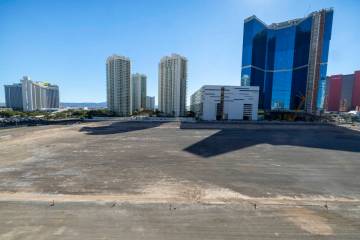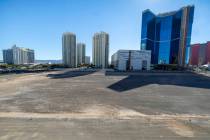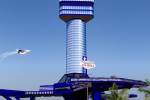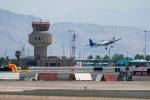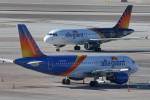Corporate jet picture nose dives
Plunging sales prices. Used units glutting the market, further depressing the demand for new. Owners hopelessly underwater compared to their loans. Some just handing the keys to the banks and walking away.
No, this is not another tale of Las Vegas real estate woe. It describes the industry behind one of the most lusted after and also reviled of all corporate perks, the private jet.
As the National Business Aviation Association opened its convention in two venues in Las Vegas on Monday, participants described an industry that has only partially recovered from recession.
"It's still hit or miss," said Clint Holly, a sales representative with the aircraft broker Jack Prewitt & Associates in the Dallas suburb of Bedford. "Sometimes, certain parts of the market seem to be gaining and then fall off, and then it's something else.''
Overall, however, industry executives spoke of a once-buoyant market that took a dive three years ago as the world financial system started to wobble. Not only did sales drop, so did prices -- anywhere from 50 to 80 percent from the peak.
Holly, for example, sat in a 12-seat 1988 Gulfstream G4 that Prewitt had just completely refurbished. Work included new leather seats and wood trim but also a bathroom wide enough for two doors. Holly said it's available at $7.9 million. Before the crash, it would have gone for $22 million.
In general, said James Iacono, director of business development for Maine Aviation Corp. in Portland, Maine , sales of larger, longer-range jets have picked up. But mid-sized and light jets, with 10 or fewer seats, are tough sells.
"Right now, 70 percent of the market is outside the U.S.," said Gulfstream spokesman Jeff Miller. "Companies in emerging economies like Brazil have expanded their reach and now want ultra-long-range jets."
At the same time, industry experts note that many people who bought planes four years ago owe much more than the current market value. Some owners have been able to return the planes to lenders because they were financed with non-recourse loans, which prevents banks from going after an owner's other assets to recoup the gap between the amount owed and the value. The non-recourse loans were handed out in better times, he said, because the owner might have had other dealings with a bank.
The convention itself, which rotates among different cities, reflects its industry. Attendance hit 32,000 in 2007 but dropped to about 23,100 two years ago. This year, said spokesman Dan Hubbard, 25,168 people have sign up so far, with registration open until Wednesday.
About 100 planes have been brought to both the Las Vegas Convention Center and the Henderson Executive Airport, temporarily turning the latter into perhaps the world's priciest new- and used-vehicle lot. By contrast, 139 planes were ferried into the 2008 convention.
Politically, executive jets remain in a deep recession. President Obama's recent proposal to impose a $100 landing fee for corporate jets as well as lengthen the depreciation schedules, which drives up taxes for owners, have contributed to a sense of an industry under siege.
Many in the industry realize they are easy targets when the vast majority of air travelers have to endure security lines, get stuck in the dreaded middle seat and pay extra for everything.
When Obama tries to impose more fees or takes a swing at private jets in speeches, "People not in the industry are going to say, 'Good for him,' " Iacono said. "But it's really hard for me to understand, since he is the biggest user of a corporate jet."
Contact reporter Tim O'Reiley at toreiley@reviewjournal.com or 702-387-5290.








